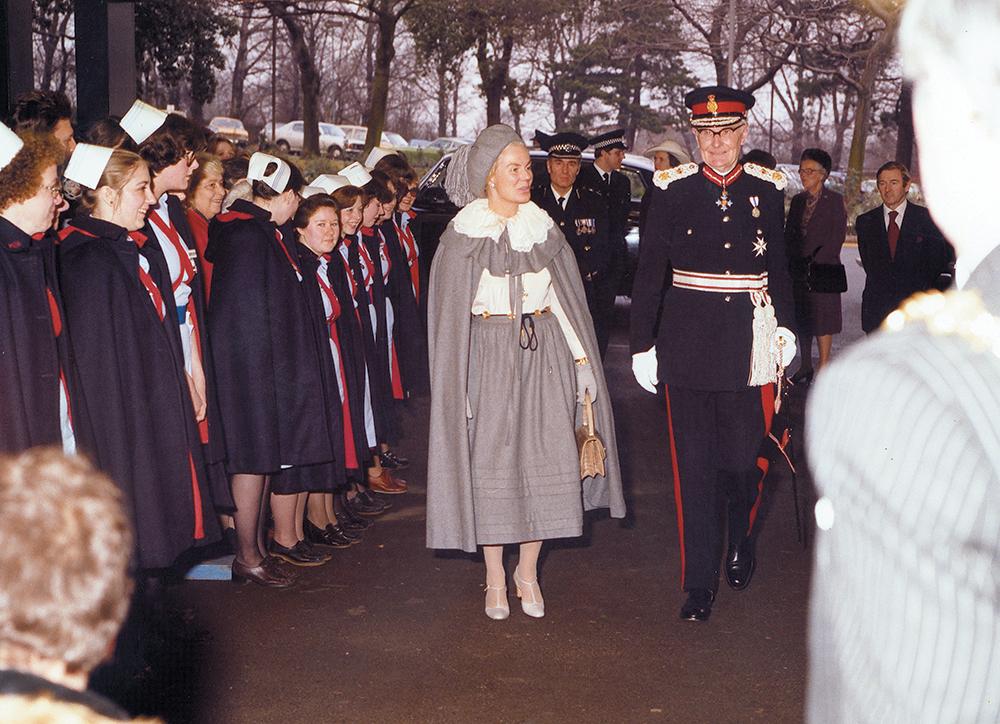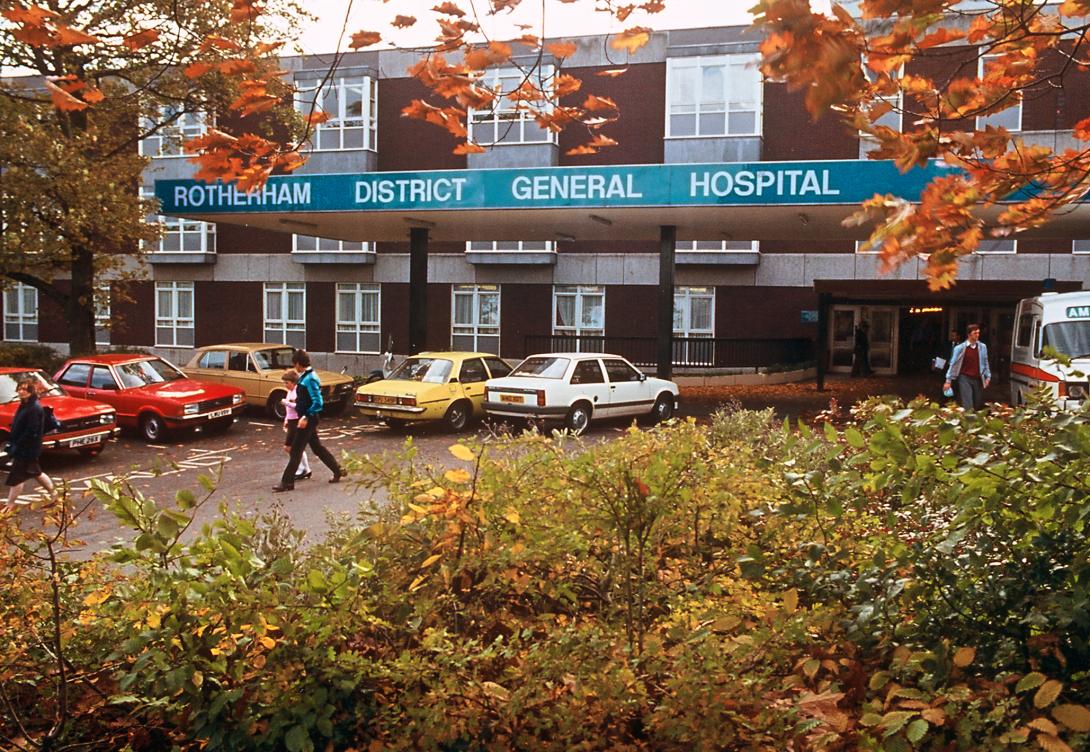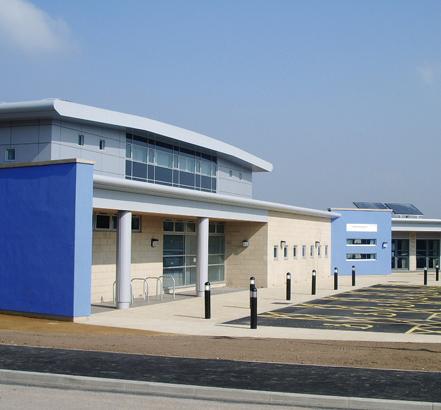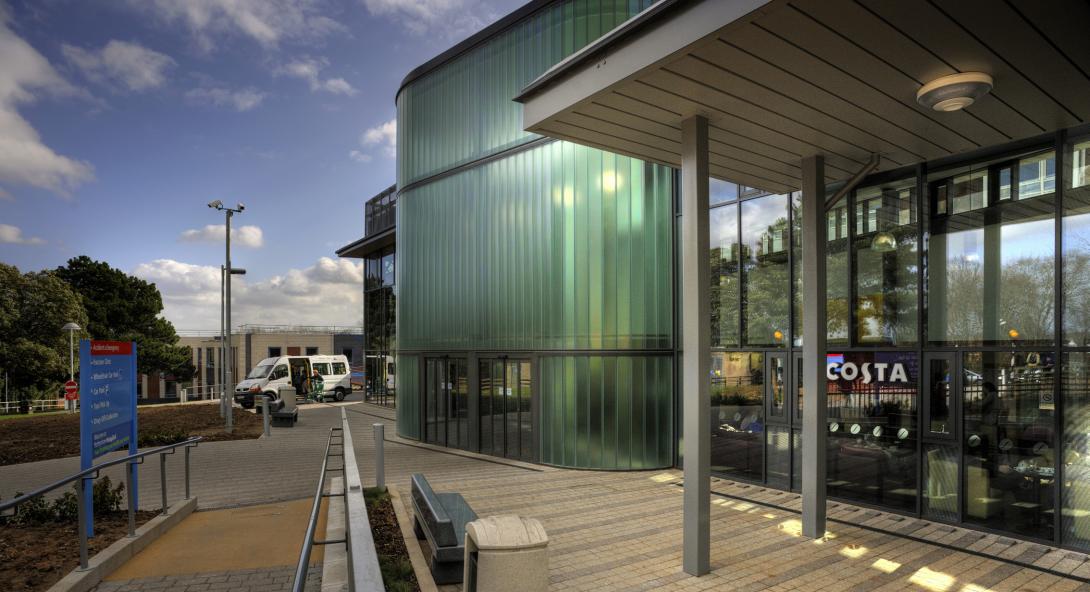Our history
1960s to 1980s
1969: Developing Phase I
A project team formed to develop the new Rotherham Hospital, to be built on the site of the existing Oakwood Hall Hospital. During the first world war, Oakwood Hall was used as a sanatorium for soldiers gassed in the trenches. The building was badly damaged when a fire was caused by one of the soldier’s cigarettes.
1972: Building of the hospital begins
One of the problems during the construction was that the whole site is built on sandstone. This meant that construction was delayed because rock breakers had to be brought in to break out the foundations.
1978: The new hospital – Phase I
Prior to the opening of the hospital, almost a quarter of the population served by the then Rotherham Health Authority received treatment in Sheffield. The hospital included general acute wards for 374 beds, a mental illness department, a temporary 50 place geriatric unit, an outpatient day ward with 20 beds intensive therapy and coronary care unit with 16 beds, an accident and emergency department and an operating department of 8 theatres.
The new hospital was opened formally by HRH the Duchess of Kent on 11 December 1978.
1985: Phase II
New specialties were brought on site, which had previously been provided at Doncaster Gate Hospital and at Listerdale Hospital. Paediatrics, obstetrics, gynaecology and genito-urinary medicine were provided with new facilities – bringing almost 2,000 staff together on site.

1990s
1992
Firbeck hospital was set up by the mining and steel industries for the rehabilitation of their workers and was taken over by the NHS. The Park Rehabilitation Centre was later built as a replacement on Badsley Moor Lane.
1993: Trust status
The hospital applied for NHS Trust status and Rotherham General Hospitals NHS Trust became operational on 1 April 1993. This included the District General Hospital, Badsley Moor Lane Hospital and Park Rehabilitation Centre. At this time the trust had almost 900 beds and 2,800 staff. There had been 33,310 admissions, 171,817 out-patient attendances and 63,000 A&E attendances in the previous year.
1993: Phase IIIA
Phase IIIA of the General Hospital Site was underway. The focus was on internal alteration and refurbishment providing new accommodation for Endoscopy, Dermatology, Paediatric outpatients, Physiotherapy, Occupational Therapy and Bio-medical engineering.
1993: Phase IIIB
This was a new building attached to the existing hospital facilities. This phase incorporated 140 beds for the elderly and a 25 place Day Hospital. Also, thanks to a successful public appeal, which achieved the target of raising £900,000, the new CT Scanning Unit was opened in the Clinical Radiology Department.
1994
The Medicine for the Elderly department became fully operational in September 1994 and allowed the transfer of services from the old Badsley Moor Lane Hospital and Wathwood Hospital, to new, modern facilities. The Trust also received its first on-site mobile MRI scanning service.
1995
The Day Surgery Centre opened to patients in February 1995. This offered the equipment and accommodation for modern surgery to be carried out and reduced the need for patients to stay in hospital overnight.
1997
Ward B7 was refurbished and expanded as a combined Haematology and Rheumatology Unit for in-patients. There was also an early initiative to improve the working lives of staff which saw the development of a new Day Nursery. This year also saw the opening of the Bereavement Centre, a new service provided on the hospital site to help those who have to deal with the administrative arrangements following bereavement.
1998
Work started in January to redevelop the main entrance of the District General Hospital. This redeveloped the reception area, the help desk, ambulance waiting area and wheelchair store and provided a range of retail and catering outlets including Boots, Forbuoys, Burger King and Upper Crust, stock and gift shops run by the WRVS. This year the Trust also gained approval for accredited cancer unit status.
1999
The Trust formed a partnership with Patientline to install dedicated telephones and TVs at the majority of beds. The catering and restaurant facilities were also redeveloped, when ISS Mediclean were awarded the contract.

2000s
2000
The Health Information Centre was set up within the main concourse of the hospital. This offered a central point to obtain information from a wide range of sources, including the internet. The new Obstetrics and Gynaecology Outpatient Suite was granted funding in 2000. The Greenoaks building was developed to provide a modern and spacious clinic suite. This year was also the 25 year anniversary of the Special Care Baby Unit, originally opened at Doncaster Gate before transferring in 1984. The Chemotherapy Service Unit also opened in 2000.
2001
The Trust received its first report from the Commission for Health Improvement; they found that patients were complimentary of the medical and nursing care they received. They also found that the hospital was clean and tidy and had a friendly atmosphere. The general outpatients clinic underwent a major refurbishment also. Ward B1, the Admissions Ward, was also refurnished as part of an annual ward upgrade programme, the major refurbishment of the Children’s Ward areas was completed and a state of the art clinical autoclave was installed for clinical waste.
2002
A new phlebotomy department for taking blood was created in 2002, which was funded by WRVS. The PALS (Patient Advocacy and Liaison Service) was also introduced in the Trust. ITU was also redeveloped and moved into newly built accommodation on Level B. A huge programme of work also started in Maternity Services to modernise the facilities.
2005
Rotherham General Hospitals NHS Trust became an NHS Foundation Trust. The organisation has to demonstrate its dedication to patient care, show that it is well led and undergo a series of assessments.
2007
BreathingSpace opened in 2007 and was part funded by The Coalfields Regeneration Trust. The centre is home to a range of internationally recognised respiratory services and provides rehabilitation and respite for Rotherham patients on an inpatient and outpatient basis.
2008
30 years since the opening of the hospital was celebrated, colleagues received bonuses and a variety of events were held.

2010s
2010
Works were completed on the new main entrance of Rotherham Hospital. The modern development incorporated a new Health Information area, new visitor toilet and changing facilities, a grand, bright and open entrance and a community corner with a spacious seating area. Internally, the building was reshaped to create better circulation for patients, visitors and staff. The development also saw the introduction of new retail outlets including Costa.
2011
The Rotherham NHS Foundation Trust merged with community services in April 2011, bringing streamlined, effective care for patients locally.
2012
In June 2012 the Trust implemented Phase 1 of the new Electronic Patient Record (EPR), Meditech. This saw the introduction of live, real time bed management across every ward in the hospital. Electronic ordering for Pathology and Radiology and use of the system in Theatres was also introduced and appointment scheduling and attendance in Outpatients went live. There continues to be many developments with the Trust’s EPRs since this time. This year also saw the demolition of the former mental health block, providing a dedicated parking area for Trust colleagues.
2014
The Trust’s Ear Care and Audiology Services also received a special visit from MPs and BreathingSpace received a parliamentary visit.
2015
In January 2015 Monitor, the sector regulator for health services in England, reported that patients were benefitting from improvements made by The Rotherham NHS Foundation Trust in its hospital and community services.
The Trust also signed up to the #hellomynameis campaign set up by Dr Kate Granger and the Governors of The Rotherham NHS Foundation Trust launched a new series of Community Health Meetings, which provided the opportunity for Members of the Trust and public to find out about a range of different health topics from clinicians at the Trust. This year also saw the refurbishment of the Trust’s Obstetric Theatre.
2016
In January Hospital doctors and local GPs, accompanied by key partners, gathered on the building site of the new Urgent & Emergency Care Centre at Rotherham Hospital to give the newly erected steel frame the seal of approval.
Rotherham Hospital and Community Charity pledged a generous £30,000 to Rotherham’s Scanner Appeal launched by the British Heart Foundation (BHF) in November, set to provide is an echo-cardio machine, additional to the three already in use at Rotherham Hospital and Rotherham’s Heart Failure and Cardiac Rehabilitation services celebrated 10 years of service.
Colleagues across the Trust also helped shaped our new values – Ambitious, Caring and Together.
The end of 2016 also saw the Trust’s Informatics team receive a national award for an innovative IT system SEPIA, which a viewing tool which allows health care professionals to see an integrated patient record.
2017
July saw the opening of the new Urgent and Emergency Care Centre which was developed in collaboration with the Rotherham Clinical Commissioning Group; a state of the art facility providing emergency care and walk in services for the people of Rotherham.
A Hospital Services Review was commissioned to see how we can deliver some key services even better to the community.
The Trust was awarded “Baby Friendly Status” by the international children’s charity UNICEF and secured two major contracts to provide a remodelled Integrated Sexual Health service and also the provision of 0-19 Children’s Services.
At the end of the year our Respiratory nurse consultant and our Ear Care and Audiology service received National Awards for the excellence of their services.
2018
A series of events were held throughout the year to celebrate 40 years since the opening of Rotherham Hospital and 70 years of the NHS.

